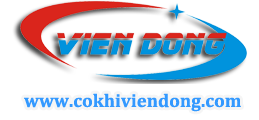Contents
The information and views set out in this publication are those of the author(s) and do not necessarily reflect the official opinion of Magnimetrics. Neither Magnimetrics nor any person acting on their behalf may be held responsible for the use which may be made of the information contained herein. The information in this article is for educational purposes only and should not be treated as professional advice. Magnimetrics and the author of this publication accept no responsibility for any damages or losses sustained as a result of using the information presented in the publication. Some of the content shared above may have been written with the assistance of generative AI.
What are product level costs?
In activity-based costing (ABC), an activity cost driver influences the costs of labor, maintenance, or other variable costs. Cost drivers are essential in ABC, a branch of managerial accounting that allocates the indirect costs, or overheads, of an activity. Labor and materials costs are considered direct costs if they are incurred during the manufacture of a product and can be directly allocated to that product. Manufacturing overhead includes all other expenses incurred during the manufacture of a product that cannot be directly allocated to that product.
Tools and Technologies for Optimizing Batch Level Activities in Packaging
The setup time required to switch between producing different furniture items is a batch level activity. By identifying this activity and tracking the time and resources spent on it, the company can better understand the cost implications of producing different batches of furniture. Essentially, it is the action upon which cost is assigned in activity-based costing, like the number of units produced, labor hours used, or machine hours consumed. TRADITIONAL COST MEASUREMENT Traditional cost measurement assigns all costs to the production unit. In manufacturing, these costs usually equate to those costs that can be entered into inventory.
Batch Level Activities
- In this way ABC often identifies areas of high overhead costs per unit and so directs attention to finding ways to reduce the costs or to charge more for costly products.
- From the perspective of packaging managers, one of the main challenges in implementing batch level activities is optimizing the use of resources.
- GAME has been employing traditional costing methods and applies factory overhead on the basis of labor costs.
- Each of these ranges is assessed by price, and these costs are allocated to the company’s overhead costs.
This ensures that only high-quality products reach the market, reducing the risk of customer complaints or returns. For instance, a pharmaceutical company that packages medications can implement efficient batch level activities to conduct thorough inspections and quality checks on each batch before distribution. This not only guarantees product integrity but also enhances customer trust and satisfaction. For instance, purchasing materials in bulk for packaging multiple products at once often results in lower costs per unit compared to buying materials for individual packaging. Additionally, consolidating tasks such as labeling or sealing into batch processes reduces labor costs by maximizing productivity.
Activity price drivers are utilized in exercise-primarily based costing, and they give a more correct dedication of the true value of enterprise activity by contemplating the indirect expenses. Activity-primarily based costing (ABC) is a system that tallies the prices of overhead actions and assigns these prices to products. We can also take a look at how the costs will be assigned in a larger batch, say 16,000 pcs. Machine set-up costs then arrive at EUR 0.02 per unit, and the total overheads per unit under ABC will then be EUR 0.27, lower than the EUR 0.29 per traditional costing. In this scenario, we are overpricing our product under traditional costing, as the overhead cost assigned per unit is lower under the Activity-Based Costing. These costs can overspend resources when designing a simple product or underspend resources when designing a more complex one.
A duration driver, on the other hand, estimates the amount of time that a product will take to setup. Using this driver, ABC designers can assign costs to each of these drivers in real time. By estimating these rates, managers can optimize their cost-effectiveness batch level activity and maximize profits. Nevertheless, it’s important to be cognizant about the potential challenges that can arise. Employing ABC might reveal higher costs for certain products or services, leading to price increases that might not sit well with customers. Hence, tactful communication that provides comprehensive context is crucial when conveying such changes.
Perseverance and Time Management: Achieving Balance in a Busy World
The model then attributes these costs to products based on how much the product uses the activity, causing the cost. That way, the Activity-Based Costing method singles out activities with high oevrheads per unit and points out areas where management needs to reduce costs or find a way to charge more for the product. These activities are related to costs incurred in producing a group of units in an activity-based costing system. In order to control cost, you must understand the cost drivers for your product design.
The Activity-Based Costing method identifies the activities in the company and assigns their costs to production based on actual consumption. Facility level activities are those which are needed to sustain a factory’s general manufacturing process. These activities are common to a variety of products and are most difficult to link to product specific activities. Examples of facility level activities are factory management, maintenance, security, plant depreciation. Product level activities are those activities which are performed to support the production of each different type of product. Maintenance of equipment, engineering charges, testing routines, maintaining bills of materials, handling materials are some examples of batch-level activities.
Understanding these activity levels is crucial for implementing a robust ABC system that improves decision-making and operational efficiency. If machine time is used to assign cost, the setup time might be included if the machine is actively involved in the setup. If most of the setup work is performed while the machine is processing the prior batch or when the machine is sitting idle, the cost is not based on machine time but is assigned through an overhead allocation.
Therefore, applying an activity base to the budgeting process is a strategic move that can positively impact a company’s bottom line. Furthermore, budgets based on activity bases can adapt to changes in business activities, making for a more flexible and responsive budgeting process. Traditionally indirect costs were analyzed as caused equally by all products the company was making.
- These include cost reduction, improved efficiency, and enhanced customer satisfaction.
- In activity-based costing (ABC), an activity cost driver influences the costs of labor, maintenance, or other variable costs.
- The intention behind this system is to develop more accurate cost assignments based on the underlying activities that trigger the generation of costs.
- If the various types have different consumption patterns of overhead resources, a single activity base might not equally apply to all of them.
- For instance, a pharmaceutical company that packages medications can implement efficient batch level activities to conduct thorough inspections and quality checks on each batch before distribution.
- For instance, in the food industry, each batch of a product may undergo quality control tests to ensure its safety and adherence to specific standards.
Implementing batch level activities for packaging can be a complex and challenging process. It requires careful planning, coordination, and execution to ensure that products are packaged efficiently and effectively. However, despite the challenges, overcoming them can lead to significant benefits such as improved productivity, reduced costs, and enhanced customer satisfaction. From a production standpoint, batch level activities allow manufacturers to package multiple products simultaneously, saving time and resources. For example, when packaging bottles of shampoo, it is more efficient to label and box several bottles at once rather than doing each bottle individually. This approach not only speeds up the packaging process but also minimizes downtime between tasks.
Activity-based costing (ABC) is a method of assigning overhead and indirect costs—such as salaries and utilities—to products and services. Understanding the concept of batch level activities is crucial in waste management as it allows businesses to identify and implement strategies that minimize waste generation. Batch level activities refer to the tasks or processes that are performed for a group of products or services together, rather than individually. These activities are typically carried out at specific intervals or in batches, resulting in economies of scale and increased efficiency. Batch level activities play a crucial role in minimizing waste within various industries.
This requires strict adherence to standard operating procedures (SOPs) and continuous monitoring of packaging activities. For instance, if a particular batch requires labeling with specific information such as expiration dates or barcodes, it is essential to have robust quality control measures in place to verify accuracy. Moreover, batch level activities contribute to maintaining consistent quality throughout the packaging process.


